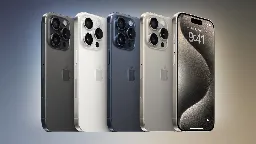iPhone 15 can limit battery charge to 80%. Does this mean there’s now battery passthrough?
hermes2000 @ hermes2000 @infosec.pub Posts 1Comments 5Joined 2 yr. ago
hermes2000 @ hermes2000 @infosec.pub
Posts
1
Comments
5
Joined
2 yr. ago

You’re right that batteries can’t be both in a “charging” and “discharging” state at the same time. However, a workload drawing 1 A from a battery and a charger supplying 2 A leads to net gain of 1 A, aka “charging”.
It isn’t both charging and discharging, it’s just in a state of charging, despite the workload it’s performing. Likewise, the battery can provide 2 A while only being charged 1 A, leading to a state of discharging.
So, a battery can totally power a device while simultaneously being charged, which I believe is how iPhones currently operate. The battery is always in the power path. Willing to be wrong, that’s just my current understanding.